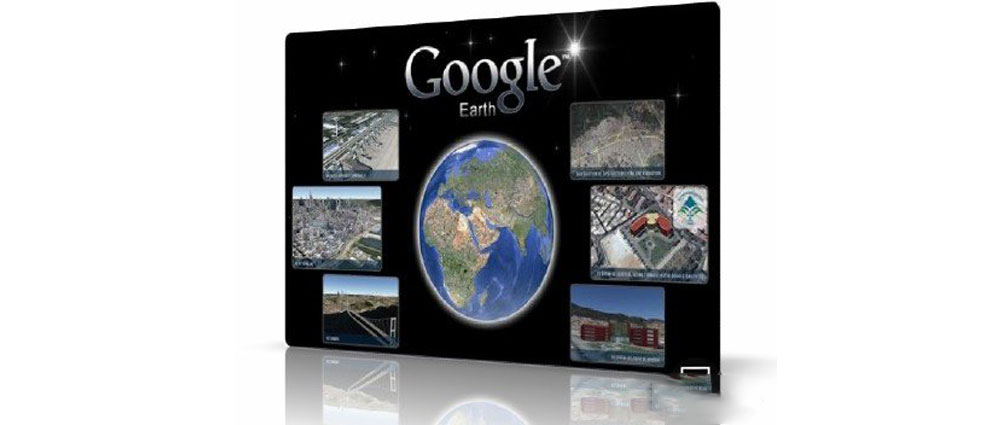Mapviewer: historical imagery at 2004-05-05
Mapviewer: historical imagery at 2015-1-4
How to output map to BMP/TIFF/JPG/PNG/ECW/SGI/IMG file?
After downloading, all small images are saved on your disk. Then you can combine them into one big image map.
We provide a tool to combine the images, you can run it from menu 'Tools'->'Map Combiner'.
The flat file on google earth is for Lat/Long projection (EPSG:4326), but google maps uses Web Mecator projection (EPSG:3857), if you want to reprojection the downloaded images, you can check on the 'Re-projection to Web Mecator (TIFF)' option.
How to export tiles to sqlite database?
When downloading finished, all small images are saved on your disk. Then you can export them into a sqlite database (MBtiles format).
In 'Map Viewer' , you can click menu 'Export'->'Export as sqlite database.. ', to create your sqlite file.
How to use offline maps in RMaps, Locus Map or OruxMaps?
After exporting all downloaded tiles into a sqlite database, then you can use the sqlite file in some Android apps, such like RMaps and OruxMaps.
For RMaps: When you finished exporting tiles to sqlite database with export type 'For RMaps or Locus Map', you will get a file: your_task_name.geid.sqlitedb, then copy it to your Android device, to your RMaps installed path, might be like '/sdcard/rmaps/maps/', then refresh your RMaps offline maps, you will see a new offline maps 'your_task_name_geid.sqlitedb'.
Note: when you view the offline maps in RMaps, you need to zoom it to your downloaded zoom level, otherwise, it will show blank maps.
For Locus Map: Same as RMaps, when you finished exporting tiles to sqlite database with export type 'For RMaps or Locus Map', you will get a file: your_task_name.geid.sqlitedb, then copy it to your Android device, to your Locus Maps installed path, might be like '/sdcard/Locus/maps/', then refresh your Locus offline maps, you will see a new offline maps 'your_task_name_geid.sqlitedb'.
For OruxMaps: When you finished exporting tiles to sqlite database with export type 'For Oruxmaps', you will get two files: your_task_name.geid.otrk2, your_task_name.geid.OruxMapsImages.db, you need to rename the your_task_name.geid.OruxMapsImages.db to OruxMapsImages.db, then on your Android device, in your OruxMaps installed path, might be like '/sdcard/oruxmaps/mapfiles/', create a new folder suchlike 'exmaple', then copy 'OruxMapsImages.db' and 'your_task_name.geid.otrk2.xml' to this folder, refresh your oruxmaps offline maps, you will see a new offline maps 'your_task_name_geid_map'.
Known problems:
When you start to download, if you see this message: 'get version failed, please try again later. ', this means that your IP is banned by google's servers, you have to wait for 24 hours to continue, or you can change to another IP to continue.
To avoid IP banned, you can try to set the downloader to pause some minutes (default 5 minutes). But I can't guarantee it will work. Good luck!
Click menu 'Misc'->'Options', the following window will be displayed: check the checkbox 'Set pause to avoid IP banned' .
Allmapsoft Google Earth Images Downloader
Google Earth images downloader is a software utility that can help you obtain offline satellite tile images from Google Earth without installing the popular viewer on your PC. It is a relatively straightforward tool for users who prefer to work with coordinates, and it can export images to several formats.
Quick downloader that does not allow you to preview maps
First of all, it is worth noting that this application is only useful if you already know the coordinates of the areas you are interested in. There are four parameters that are used to define the target region, namely the left and right longitude and the top and bottom latitude.
You can also restrict the number of images that are downloaded at once by limiting the operation to a certain range of zoom levels.
Comes equipped with several image viewers and a map combiner
The program enables you to view the downloaded offline maps using one of the included viewing utilities. These are not particularly complex, as they only allow you to zoom in or out.
Once a download job has been completed, you will find that numerous small images are saved in the output folder. You can use the available map combiner to merge these into a single large map. Additionally, it is even possible to export the grabbed images to an SQLite database for RMaps, Oruxmaps or MBtiles.
Offers adequate documentation, but features an outdated UI
The instructions that are available in the included user manual should prove to be very helpful, especially for less experienced users.
Unfortunately, it should be said the application’s user interface leaves a lot to be desired, as it is noticeably out of date.
Overall, google earth images downloader is a useful application that provides you with a simple method of obtaining offline Google Earth maps. It is not very difficult to use, but it lacks a preview module and features an outdated UI.

